Philippi and Kavala – Via Egnatia Continued
This is my third post from the Adventures Abroad Via Egnatia tour led by Victor Romagnoli since crossing over into Greece from Turkey. In the first of those posts we visited the border city of Alexandroupoli and in the second spent some time in the magnificent Dadia National Park. Today we will move on to the famous Roman city of Philippi which once was a major metropolis on the Via Egnatia, but now is nothing more than a colossal set of ruins. Two of the most famous turning points in western history occurred here – the final defeat of Brutus and Cassius by Octavian and Mark Anthony in two battles in October of 42 BCE and the establishment of the first Christian church in Europe by St. Paul in around 50 AD. After our visit we’ll follow Paul’s route back to the ancient Greek colony of Neopolis, now the modern seaport of Kavala and explore its medieval battlements. This promises to be an exciting day for our small group. I hope you’ll join us.
History of Philippi
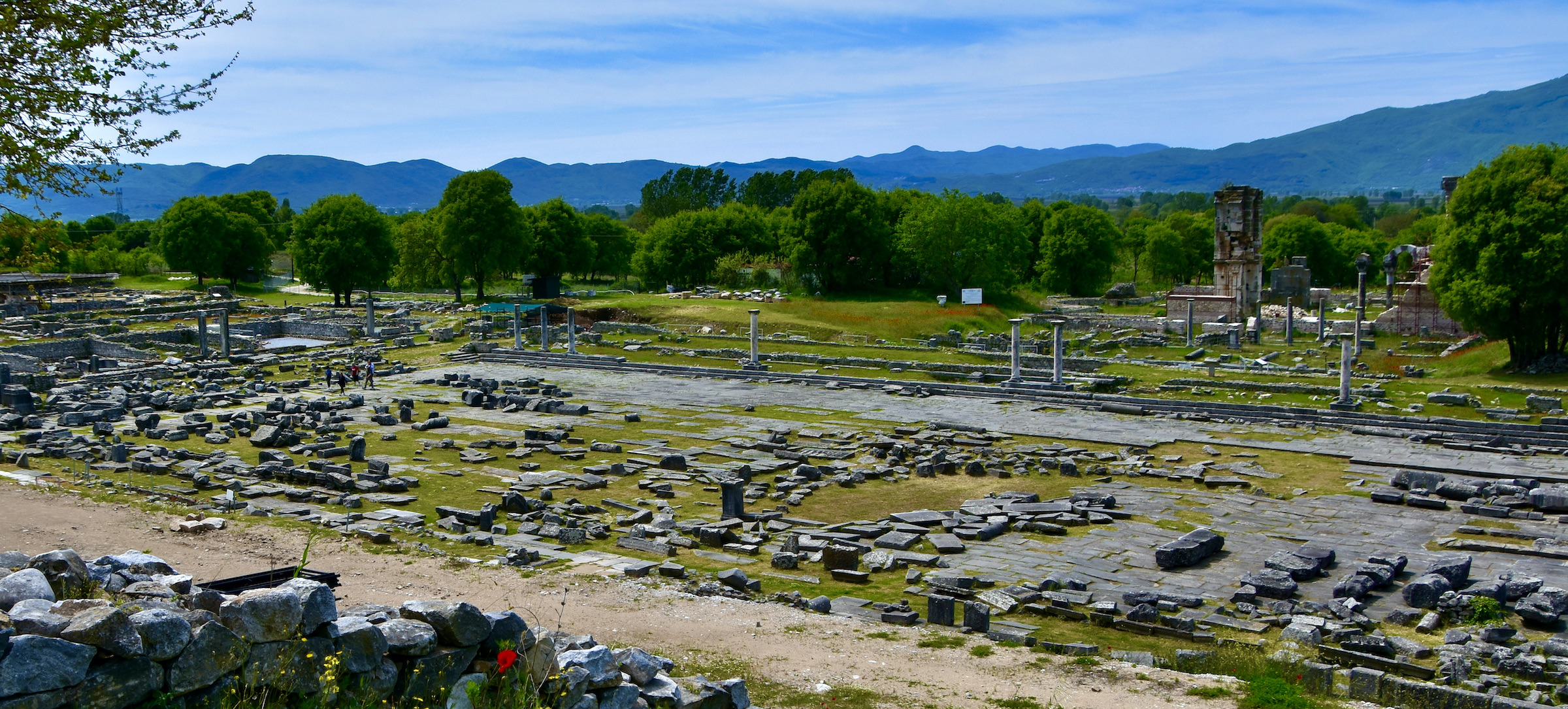
Even though the ruins of Philippi date almost entirely from the Roman period, the city is actually much, much older. First established as the city of Crenides by Greek colonists from the nearby island of Thasos in 360 BCE, it was conquered by Philip of Macedon very shortly thereafter and renamed after him. Under Macedonian rule Philippi prospered for several hundred years until the Romans prevailed in the Third Macedonian War and effectively ended the Hellenic era that had started with Philip and his son Alexander the Great. The city then languished for well over a century until being revived by a fortuitous event.
After the assassination of Julius Caesar in 44 BCE, the Roman legions split into two groups that conducted what has come to be known as the Liberator’s Civil War. The so-called liberators were the assassins Brutus and Cassius and they were opposed by Mark Anthony and Caesar’s adopted nephew Octavius, later to become the first Roman emperor, Augustus. In October of 42 BCE two armies totalling over 200,000 soldiers met in two battles just outside the city of Philippi. The result was the defeat of the liberators and their respective deaths by suicide. After the battle many of the soldiers were discharged and provided with land grants in the area. A new city was built atop the ruins of the old, keeping only the Macedonian walls and once again Philippi became a major city with the Via Egnatia passing directly through it.
St. Paul first visited Philippi on his second missionary journey and a woman named Lydia became the first Christian convert in Europe. Paul also managed to get himself thrown in jail, something he was very good at, for exorcising a demon from a slave girl. He then managed to convert his jailers. The alleged site of that jail is now a major pilgrimage site for Christians of all denominations as we are about to find out. These events are described more fully in Acts Chapter 16. He returned to Philippi on two other occasions by which time the church was firmly established there and his letter to the Philippians is one of the Pauline epistles considered to have been written by him.
The influence of St. Paul led to Philippi becoming a major religious centre with comparisons to Thessaloniki and even Constantinople during the early Christian era. After Rome had fallen to barbarian invaders Philippi remained an integral part of the Byzantine Empire until an earthquake in 619 almost totally destroyed it. That was followed by periods of rule by the Bulgars, the Byzantines again and finally the Serbs before being totally abandoned at some point in the 14th century. The Ottomans used the site as a quarry. What we will see today is the result of archaeological work dating back to the late 19th century and continued sporadically right up until 2008.
In 2016 the Archaeological Site of Philippi was inscribed as a UNESCO World Heritage Site with the following description:
The Archaeological Site of Philippi is lying at the foot of an acropolis in north-eastern Greece on the ancient route linking Europe with Asia, the Via Egnatia. The city of Philippi, re-founded by Philip II on a former colony of Thasians in 356 BCE, was reshaped by the Romans into a “small Rome” with its elevation to a Colonia Augusta of the Roman Empire in the decades following the Battle of Philippi. The vibrant Hellenistic city of Philip II, of which the walls and their gates, the theatre and the funerary heroon (temple) are to be seen, was adorned and transformed with Roman public buildings including the Forum and a monumental terrace with temples to its north. Later the city became a centre of Christian faith and pilgrimage deriving from the visit of the Apostle Paul in 49/50 CE and the remains of Christian basilicas and the octagonal church testify to its importance as a metropolitan see.
Visiting Philippi
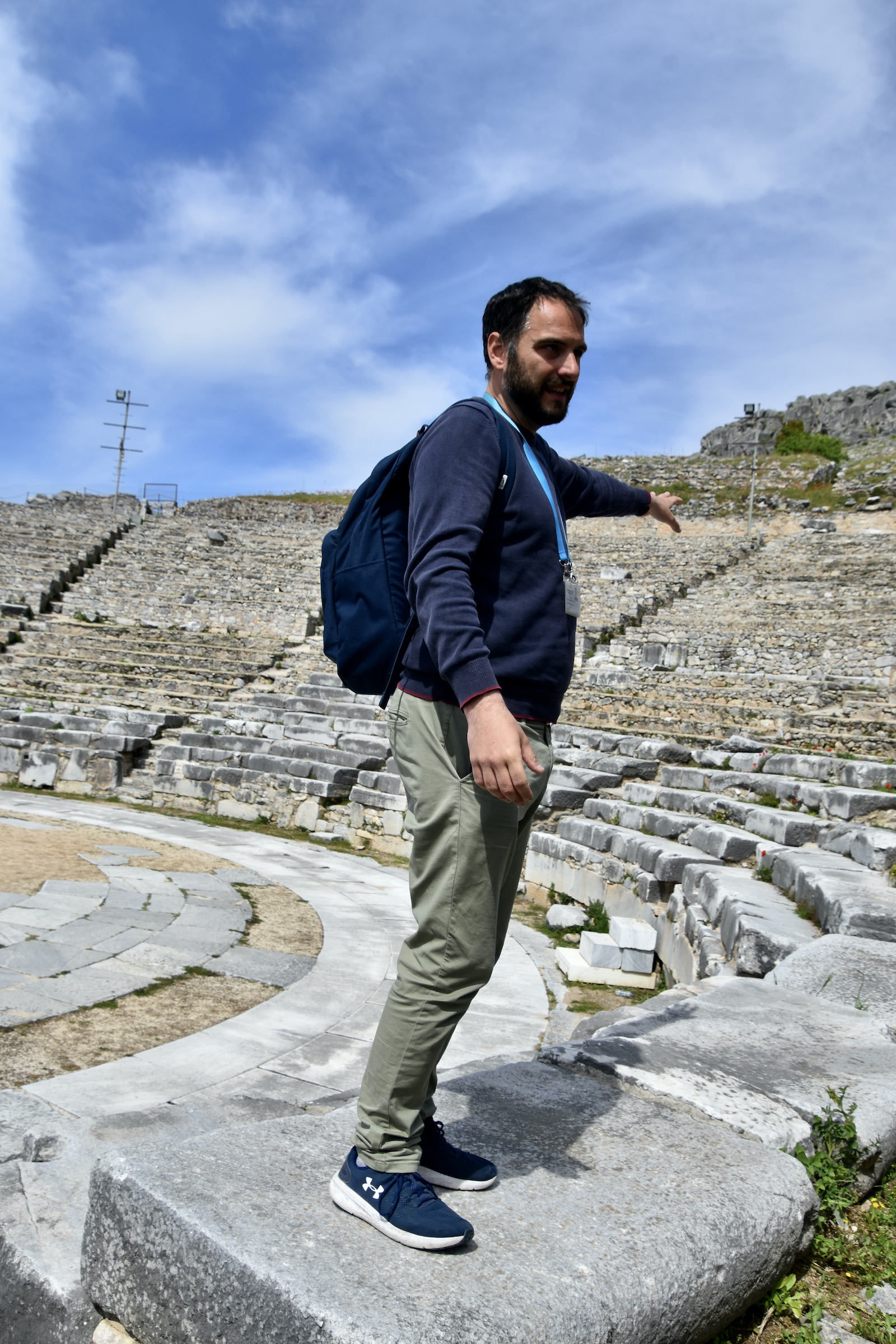
We are met at the entrance to the site by our local guide Nikos who will be with us for the next few days. His English is excellent as is his knowledge of all things related to Macedonian, Roman and Greek history in this part of the country.
The first thing he points are the remains of portions of the original city walls that were built by Philip of Macedon hundreds of years before the Romans revived the city.
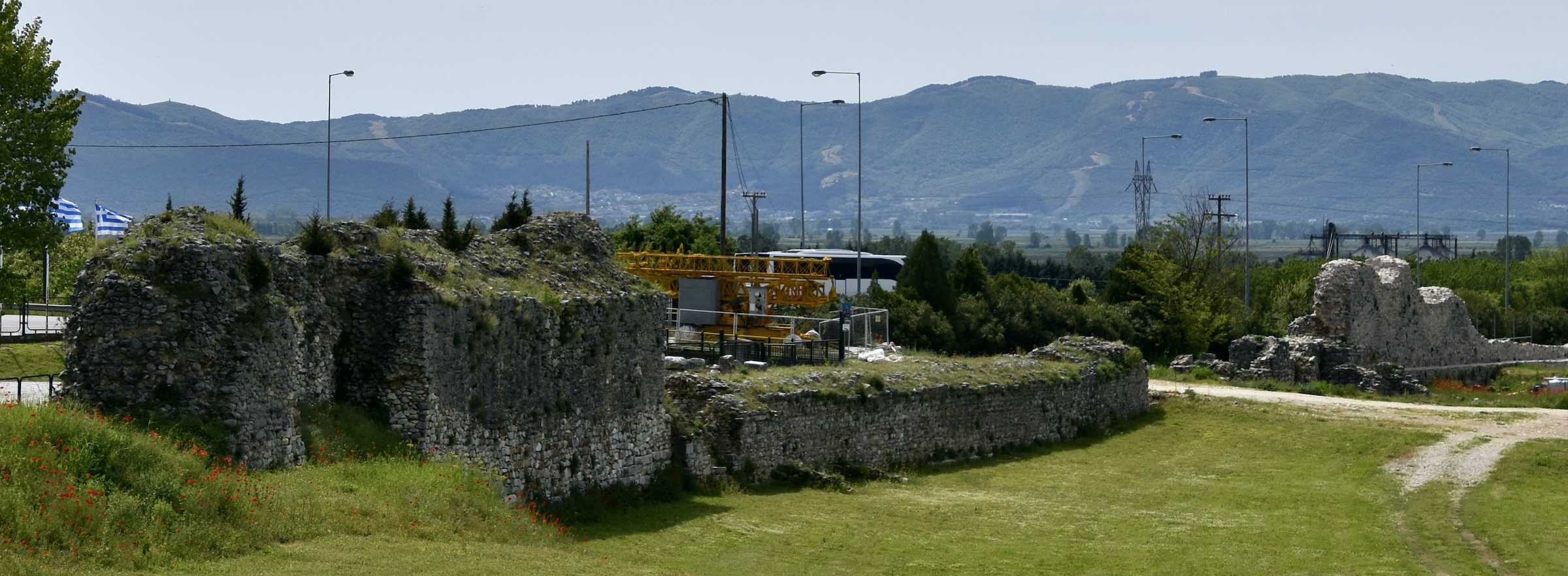
The largest structure in Philippi is the Roman theatre which was an extension of one first built by Philip. It is in excellent condition and a good place to get a run down of the history of the place from Nikos.
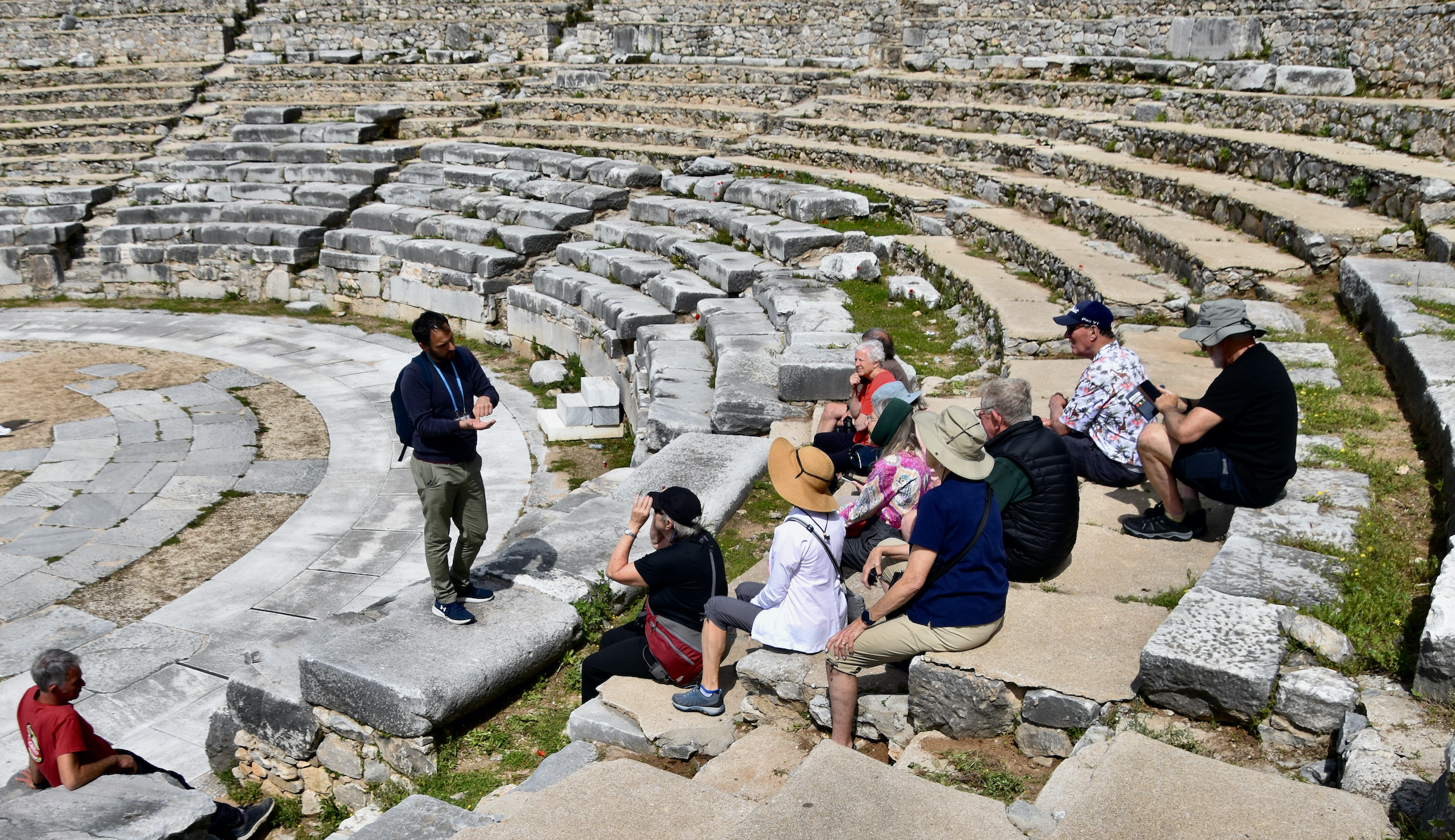
Sources on the internet claim that the theatre could hold up to 50,000 spectators, but that seems a bit of a stretch based on what I’m seeing. Still, it’s a very impressive structure considering it’s over 2,000 years old.
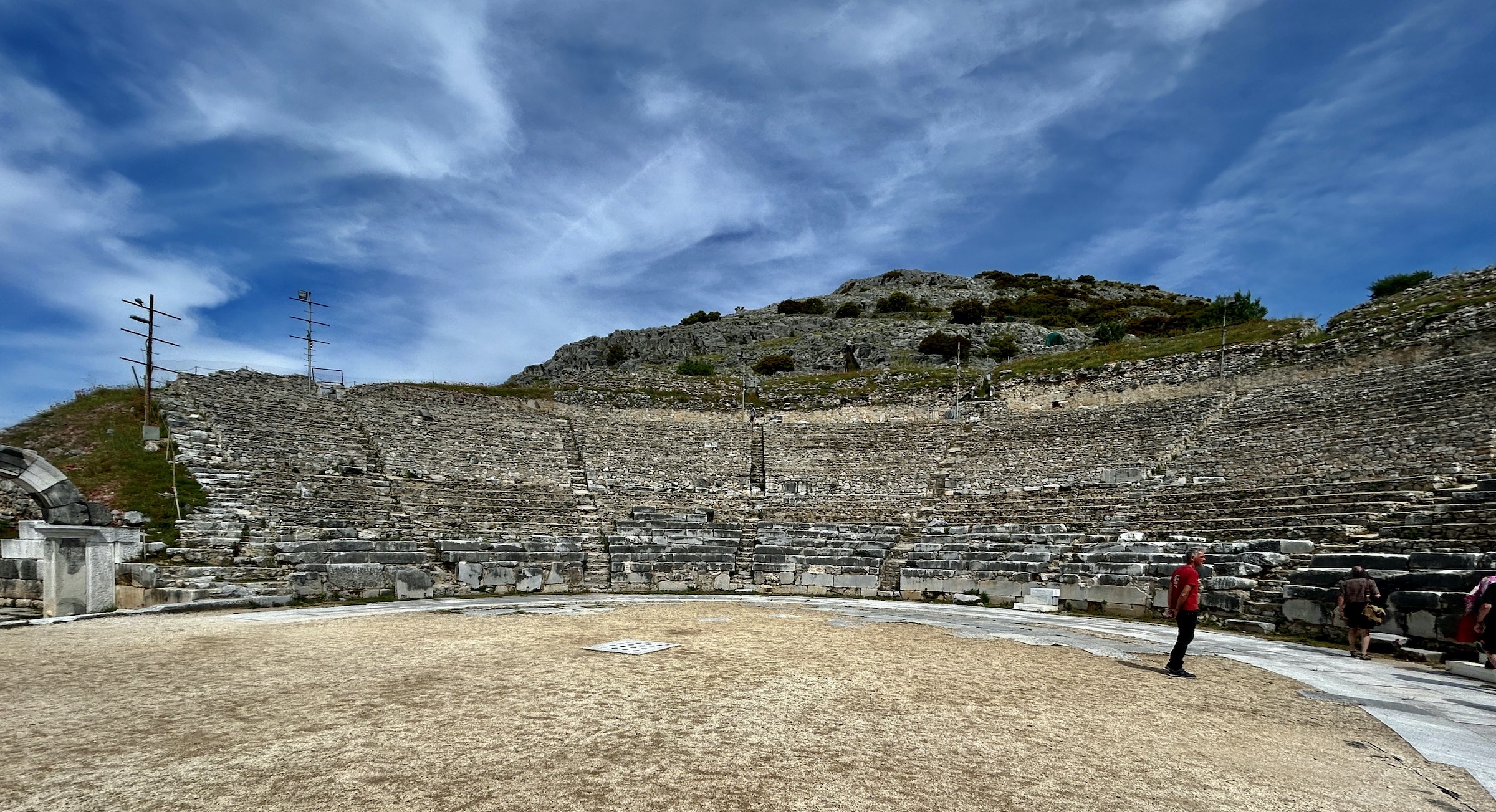
You enter the city proper through this gateway arch or parados which was actually a side entrance to the stage of the theatre.
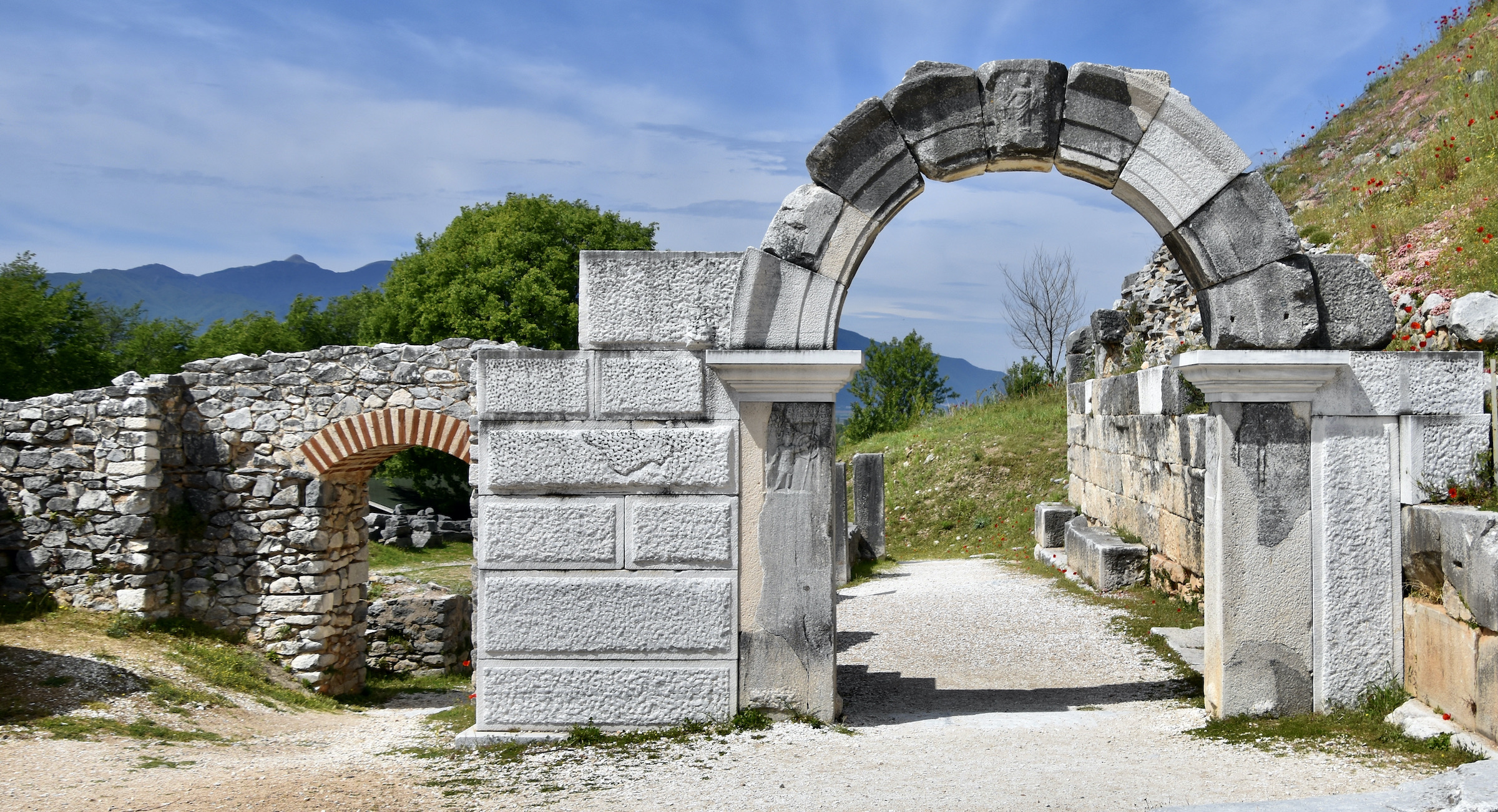
Once through this archway there is a magnificent view of the Roman forum and the later Christian basilica that was never finished. Nikos points to the mountain ridge behind the ruins and states that some people see the shape of Alexander the Great in the outline, but I confess, I’m not one of them.
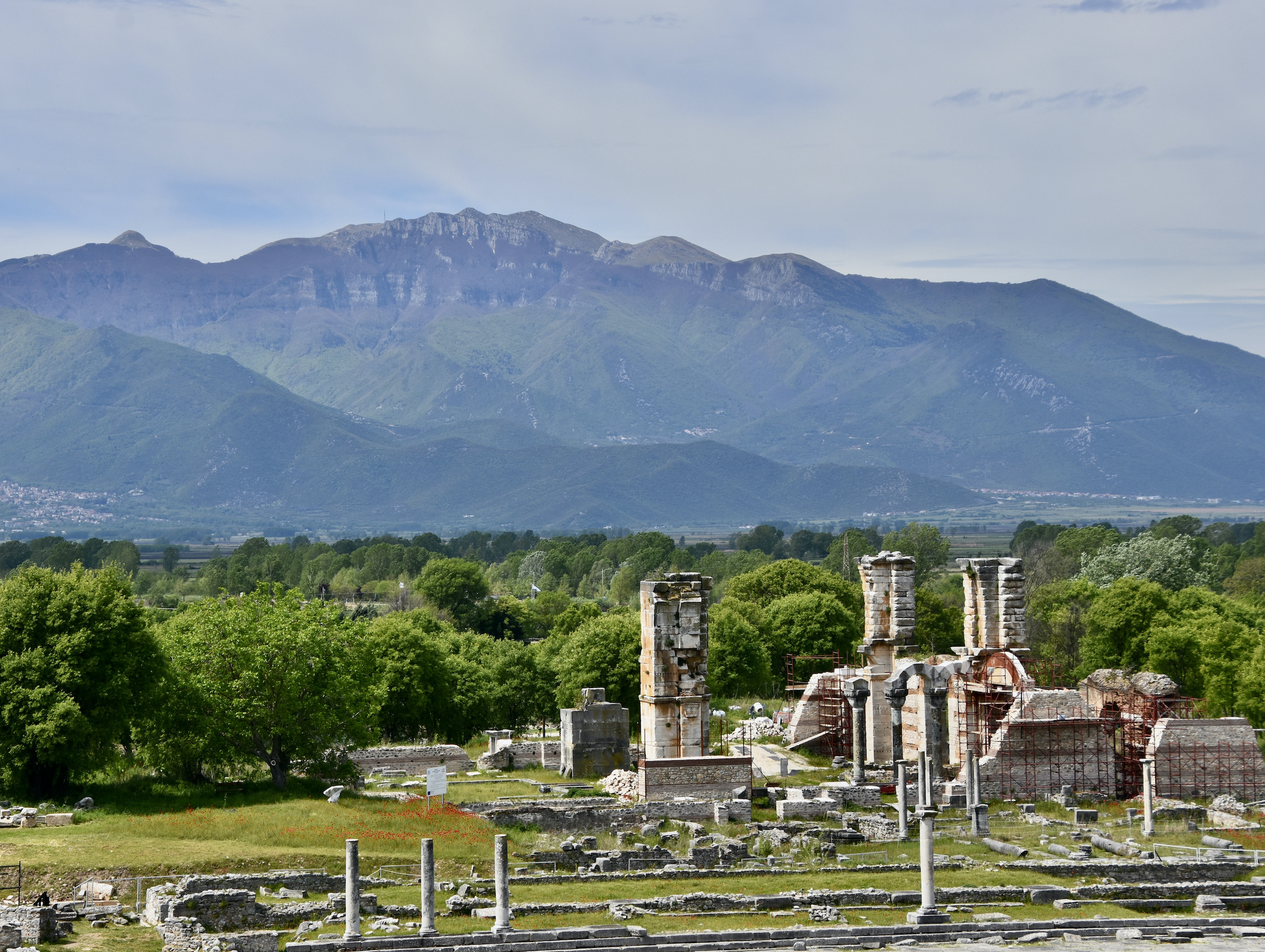
The basilica that was finished and used as a place of worship for hundreds of years is on a ridge well above the forum. It was one seven churches in Philippi that earned it the accolades comparing it to Thessaloniki and Constantinople.

Note the large group in front of us just exiting the basilica area. They were a group of Americans on an evangelical tour led by a pastor who seemed intent on reading aloud every word of St. Paul’s epistle to the Philippians on the spot where St. Paul was allegedly held in prison in Philippi. Most archaeologists and even Christian apologists admit that this story is apocryphal and it is highly unlikely that this was ever a prison cell, but rather is a simple cistern. But it makes a great spot to begin a jeremiad to the flock of faithful.
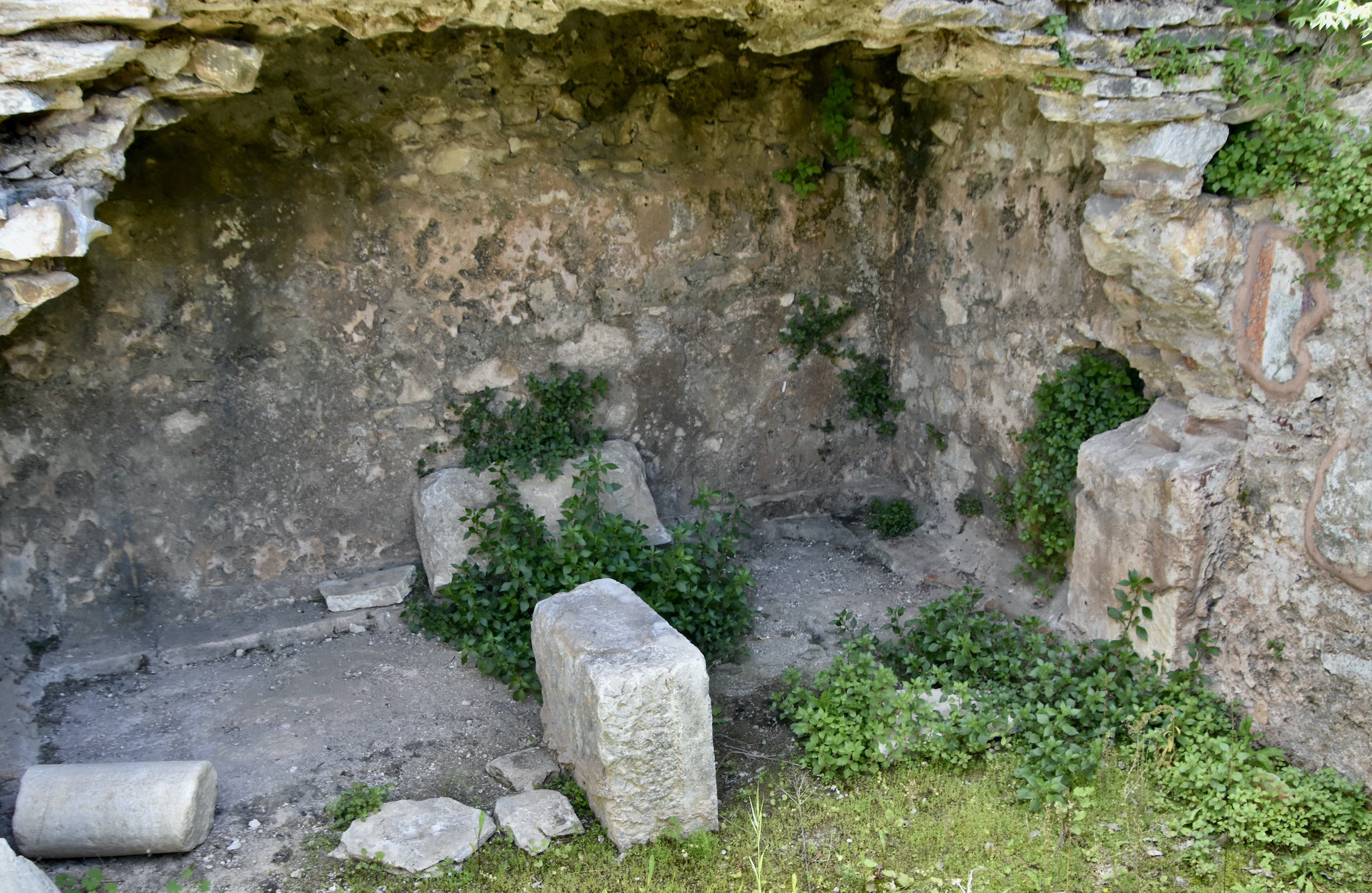
From here we made our way down to the forum the floor of which was festooned with bright orange poppies.
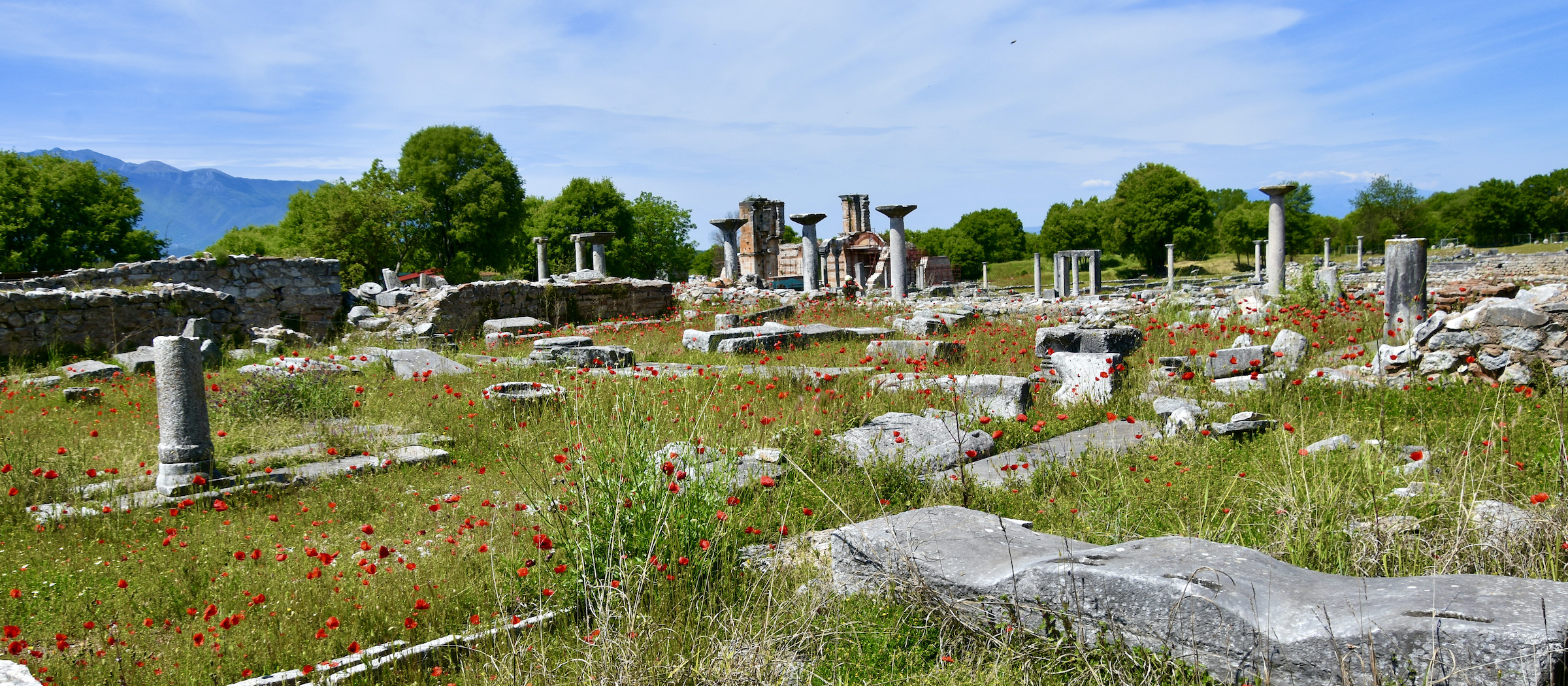
The site is largely unexcavated with only a few standing columns including these four really impressive Doric ones. This style of column dates as far back as the 7th century BCE and most famously used in the construction of the Parthenon, but was seldom used by the Romans.
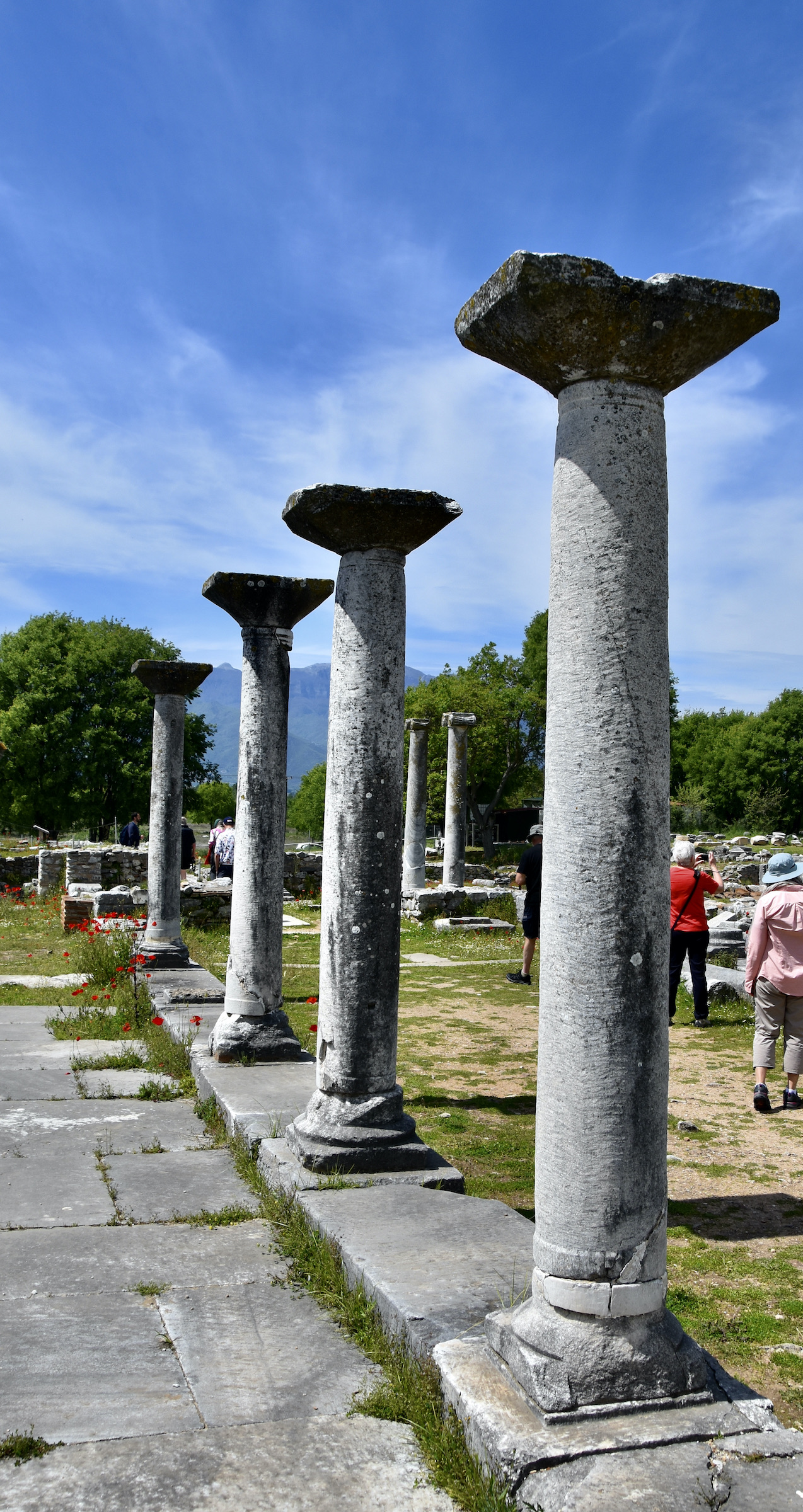
One of the more unusual features of the forum at Philippi is the Octagon, a very early Christian church built over an earlier sacred site. Its floor dates from the early fourth century and contains geometric mosaics that continued the tradition started in the Hellenistic period and was to become an important feature of Byzantine art.
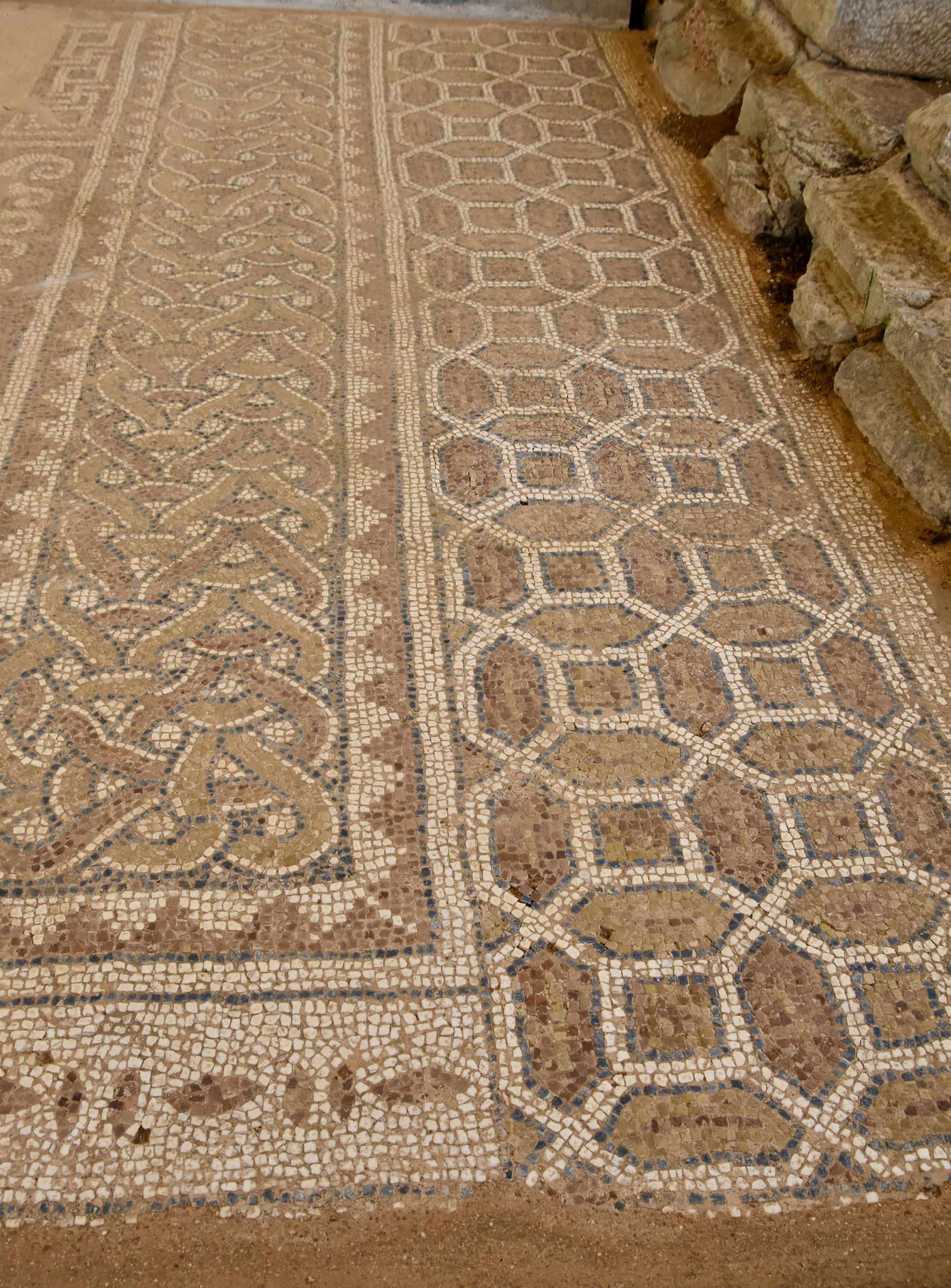
One of the things I most enjoy about exploring ancient ruins is just the haphazard and incongruous way that things sometime appear. For example these old ceramic jars, which makes me ask, have they been here unbroken for at least a thousand years? If not, when, why and how did they get here?
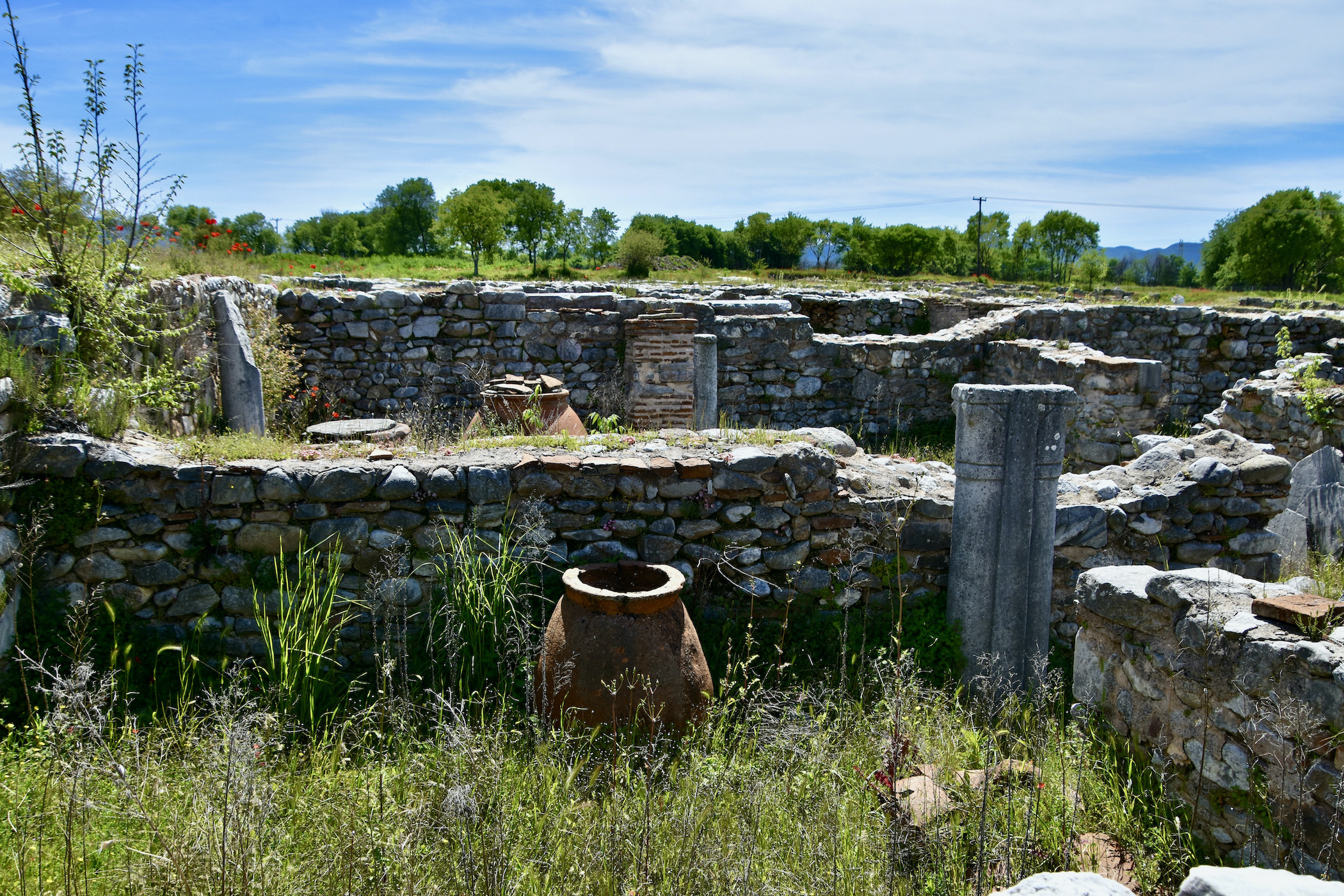
Victor named this tour Via Egnatia and now we come face to face with proof that this was an apt choice.
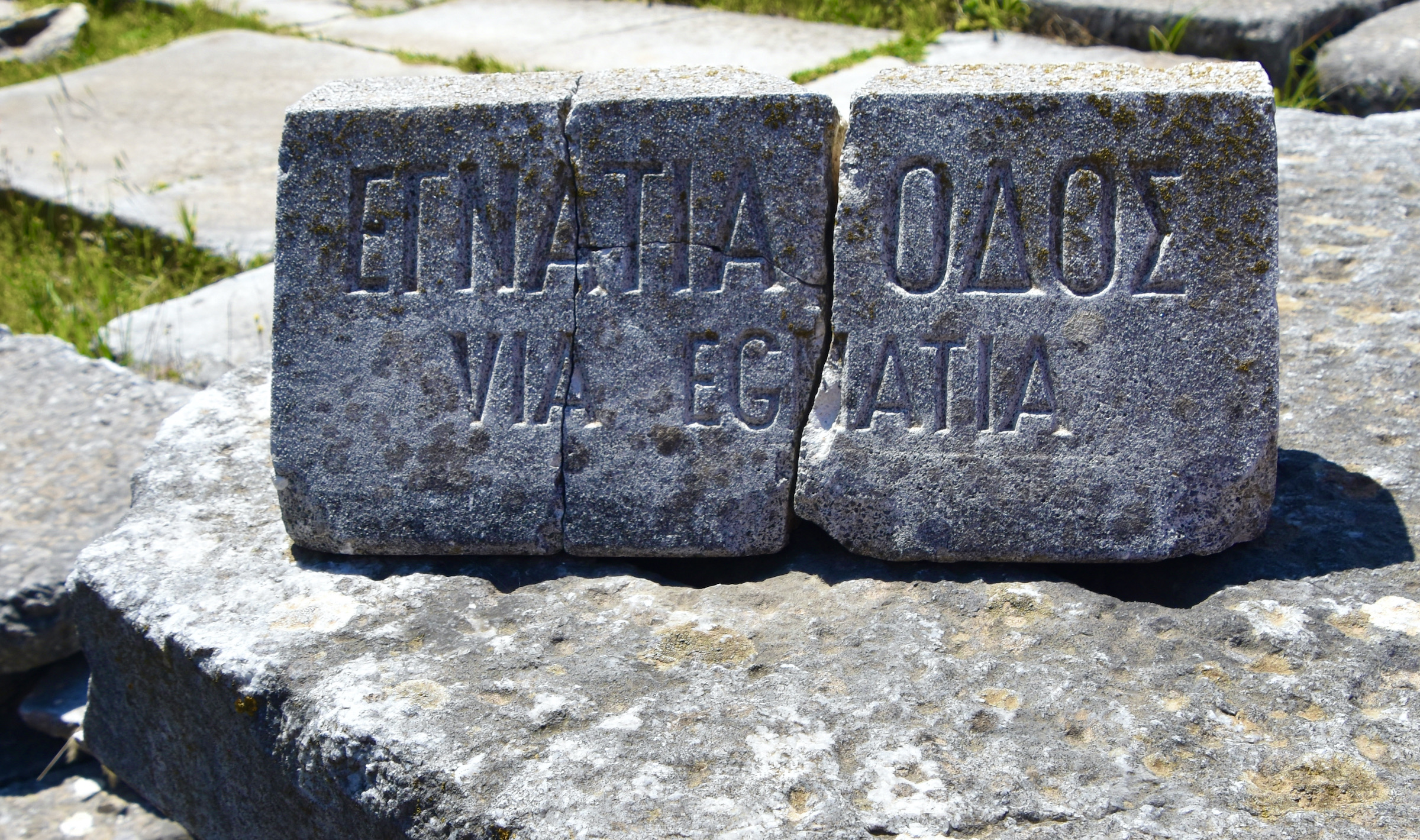
And here is the actual old Roman road that passed through Philippi.
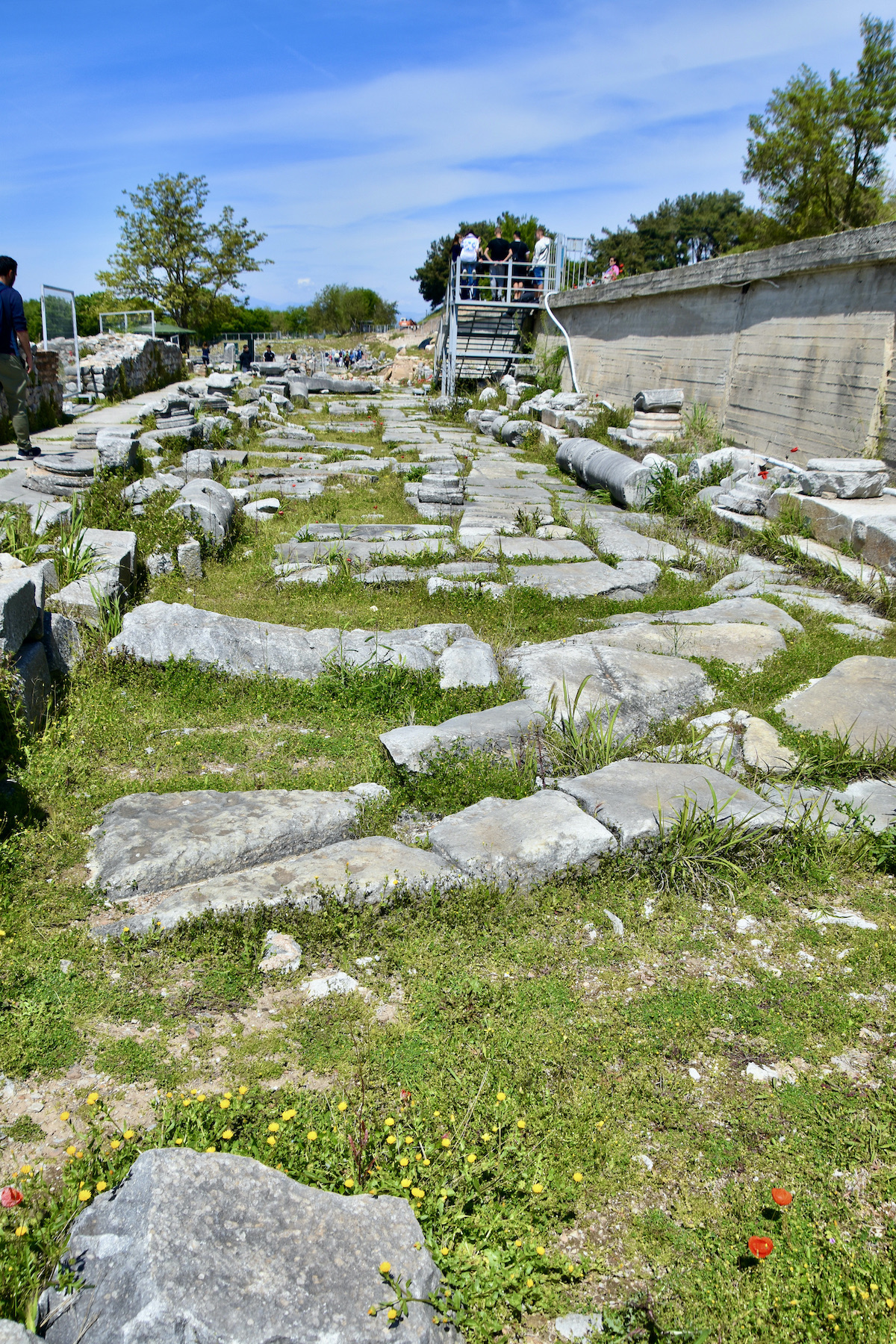
And here’s the Via Egnatia tour group on the Via Egnatia.
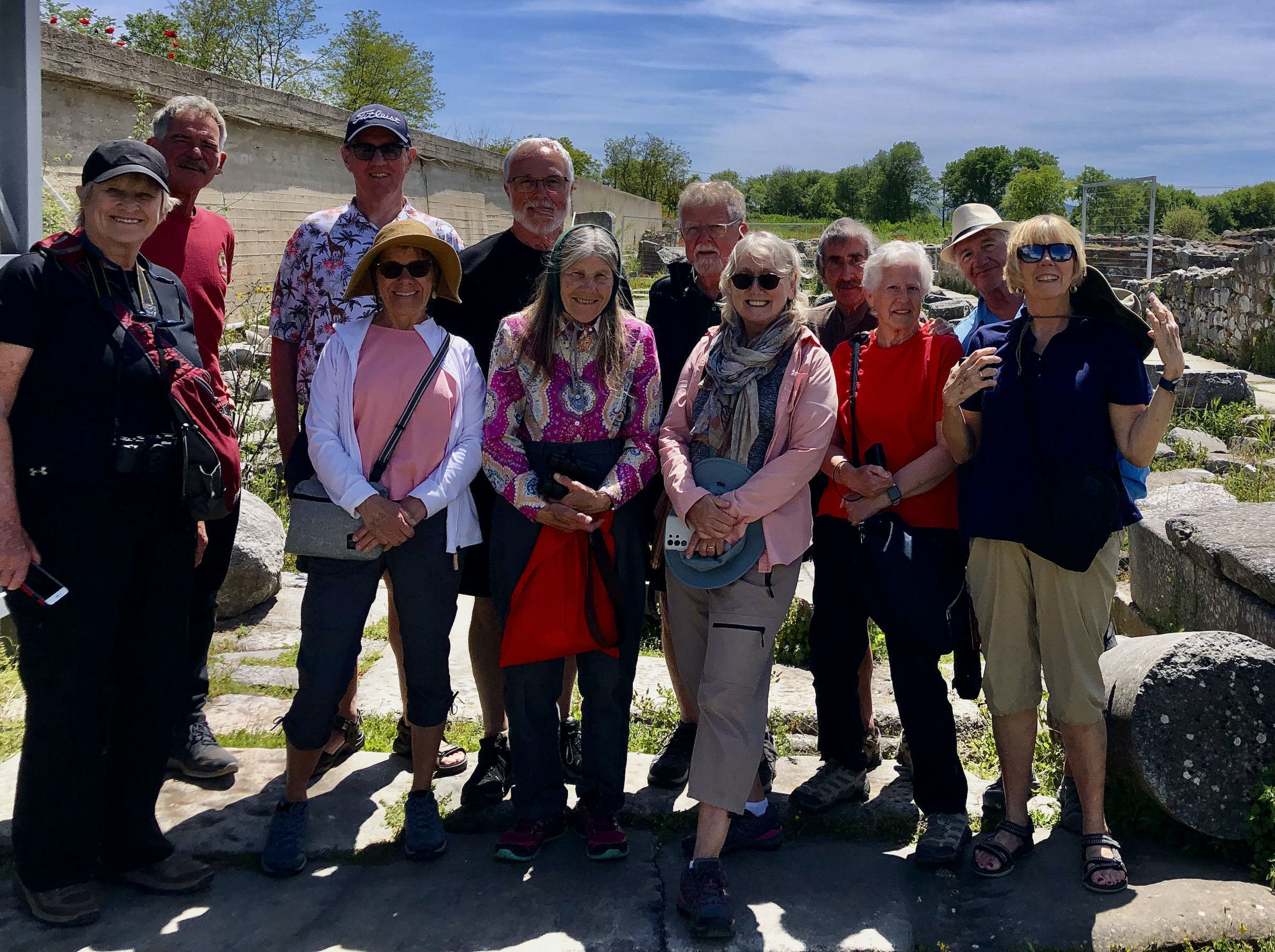
We have one more stop in Philippi before heading to Kavala. A short distance from the archaeological site is a small stream which is believed to be where Lydia was baptized by St. Paul making here the first Christian in Europe. The site has been modernized to accommodate the many Christian pilgrims who come here every year to repeat the ritual.
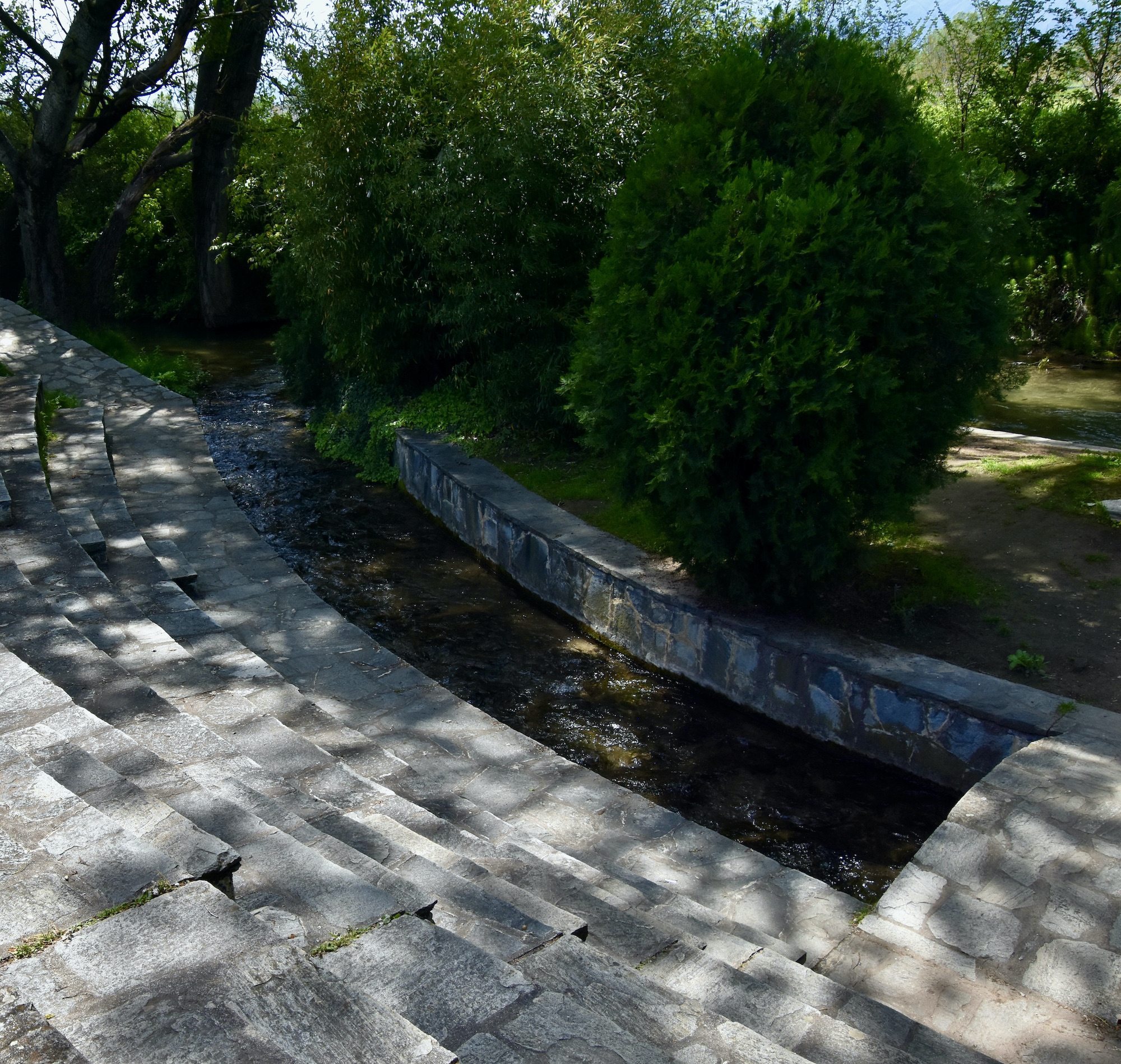
It’s a fitting place to end our visit to Philippi which has played such an important part in world history and yet receives a fraction of the visitors that far less important sites throughout Greece do.
Kavala
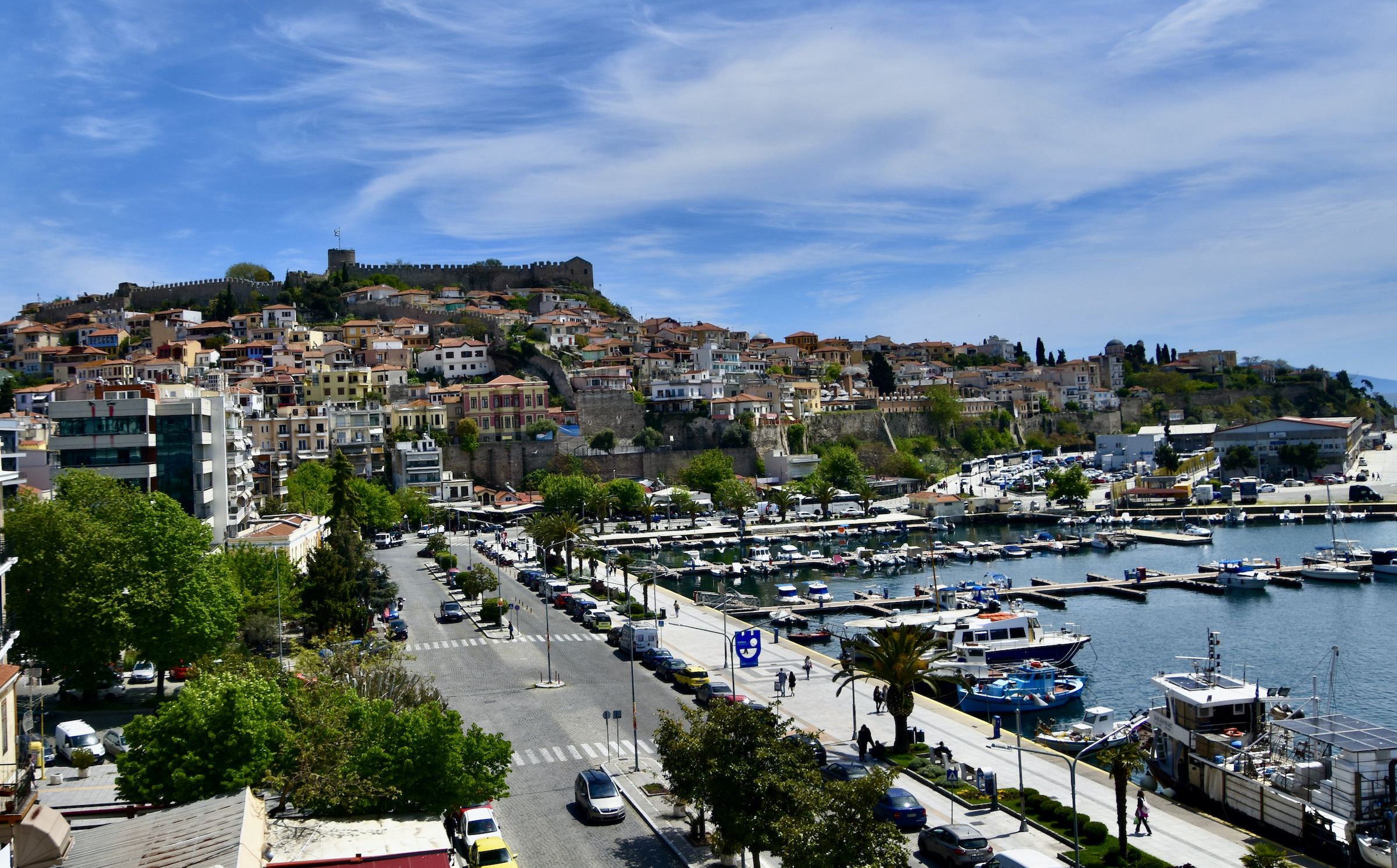
Kavala has a great location at the head of a natural harbour surrounded by high hills that made it relatively easy to defend. Originally founded by Thassian settlers as Neopolis in the 7th century BCE it was a long time ally of Athens, rebuffing an attack by the Spartans during the Peloponnesian War. Brutus and Cassius used it as their base before marching off to defeat at Philippi. The Via Egnatia passed through Kavala and St. Paul used it to get from Neopolis to Philippi when he made his first landing in Europe. Under the Byzantines the city was renamed Christopolous and they began the series of fortifications that allowed them to keep control of the surrounding area right up until the late 1300’s. In 1387 the Ottomans captured the city and held it right up until 1912. It was during this period that the name was changed to Kavala and the castle on the hill above the city was completed.
Muhammed Ali, the man who modernized Egypt after expelling the French in 1805, was born in Kavala and is still a revered figure here. Despite the enmity between the Greeks and the Turks, his statue overlooking the city remains in place.
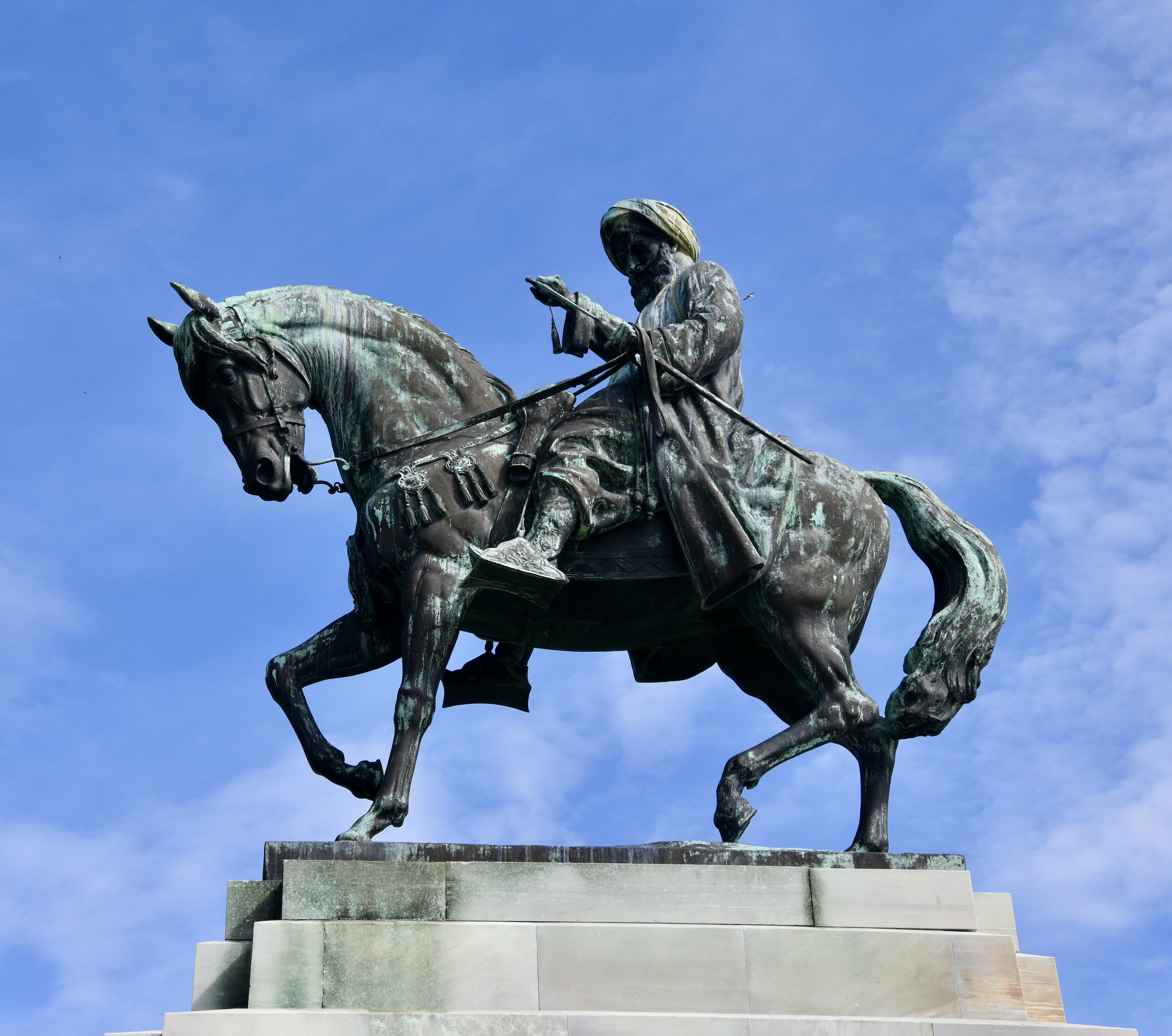
While Kavala had long periods of peace under the Greeks, Romans, Byzantines and Ottomans, that changed dramatically in 1912 when the Bulgarians invaded the city. Although they were initially driven out they returned in 1916 and for two years committed some of the worst atrocities of WWI as documented by a post-war investigative committee. The Bulgarians returned during WWII and oversaw the extermination of almost all the Jewish population. So a city that had enjoyed relative peace for over 2,500 years was caught up in the horrors of the 20th century and we like to think that we are now more ‘civilized’ than our predecessors.
Today Kavala is a city of just over 50,000 inhabitants experiencing a bit of a rebirth after decades of post-WWII decline.
After checking into the Galaxy Hotel which is right on the Kavala waterfront and from where I took the picture of the city above, we meet Victor in the lobby for a walk up to the citadel. After ambling along the waterfront with its many seafood restaurants we turn toward the steep streets leading up to the citadel passing St. Nicholas church which is alleged to be on the spot where St. Paul first set foot on the European continent.
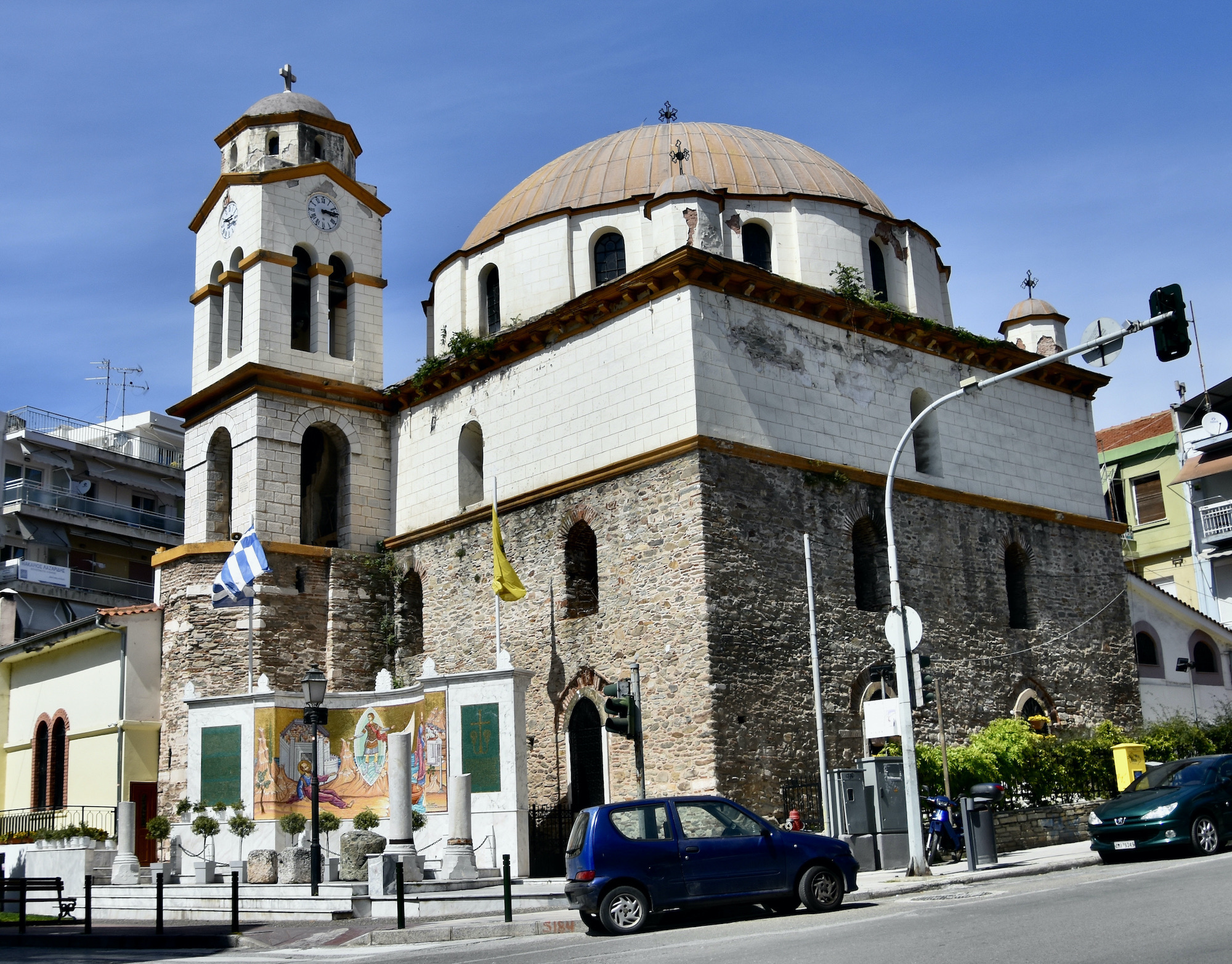
The Kavala Citadel we are visiting today is the final rendition of many earlier fortifications and dates mostly from the 16th century. It is a classic design with a set of thick walls and battlements with a keep and an arsenal. Looking out from the top of the hill before entering the Citadel you get a great view of the island of Thasos (also spelled Thassos) from whence came the founders of both Neopolis (Kavala) and Philippi. This seems strangely counterintuitive as you would normally expect islands to be colonized from the mainland rather than the other way around. That was in fact the case with Thasos which was originally a Phoenician settlement long before the Greeks arrived. I’m hoping on some future trip to visit both Thasos and nearby Samothrace, but for now all I can do is look at it with envy.

After paying the modest entry fee Victor lets us explore the Citadel on our own and then return to the hotel at our own pace.
This is some of the group standing on the wall that faces out to sea and while it’s not that high there is a dramatic drop to the ground below.
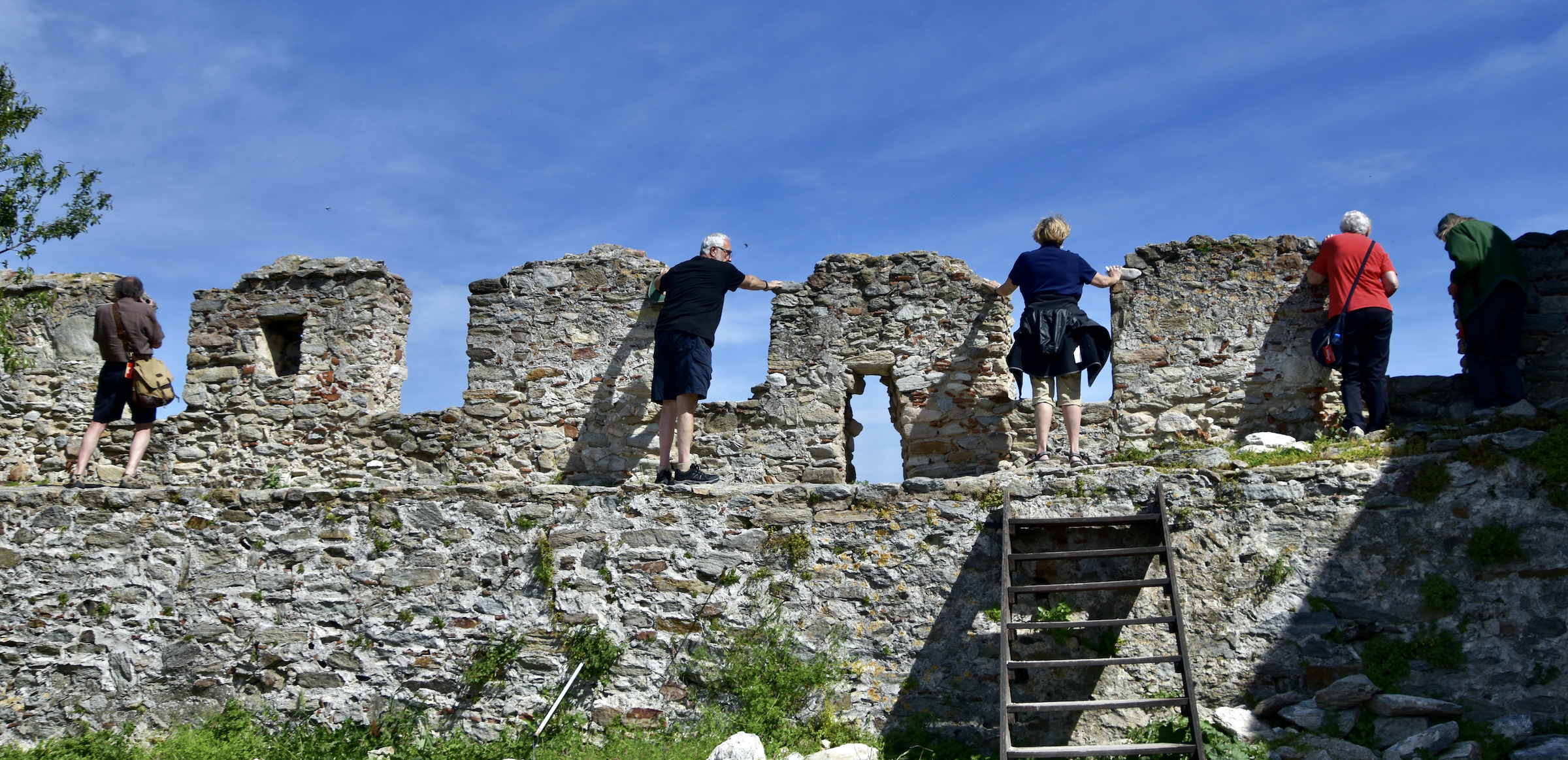
On the opposite side of the enclosure climbing the walls to get a good view of the city below is not for everyone as there are no guard rails on the rather steep steps up, but it is definitely worth doing. This is the Kavala aqueduct which although originally of Roman origin was upgraded by Suleiman the Magnificent as the same time as he oversaw the restoration of the Citadel. It was still in use up until 1911.
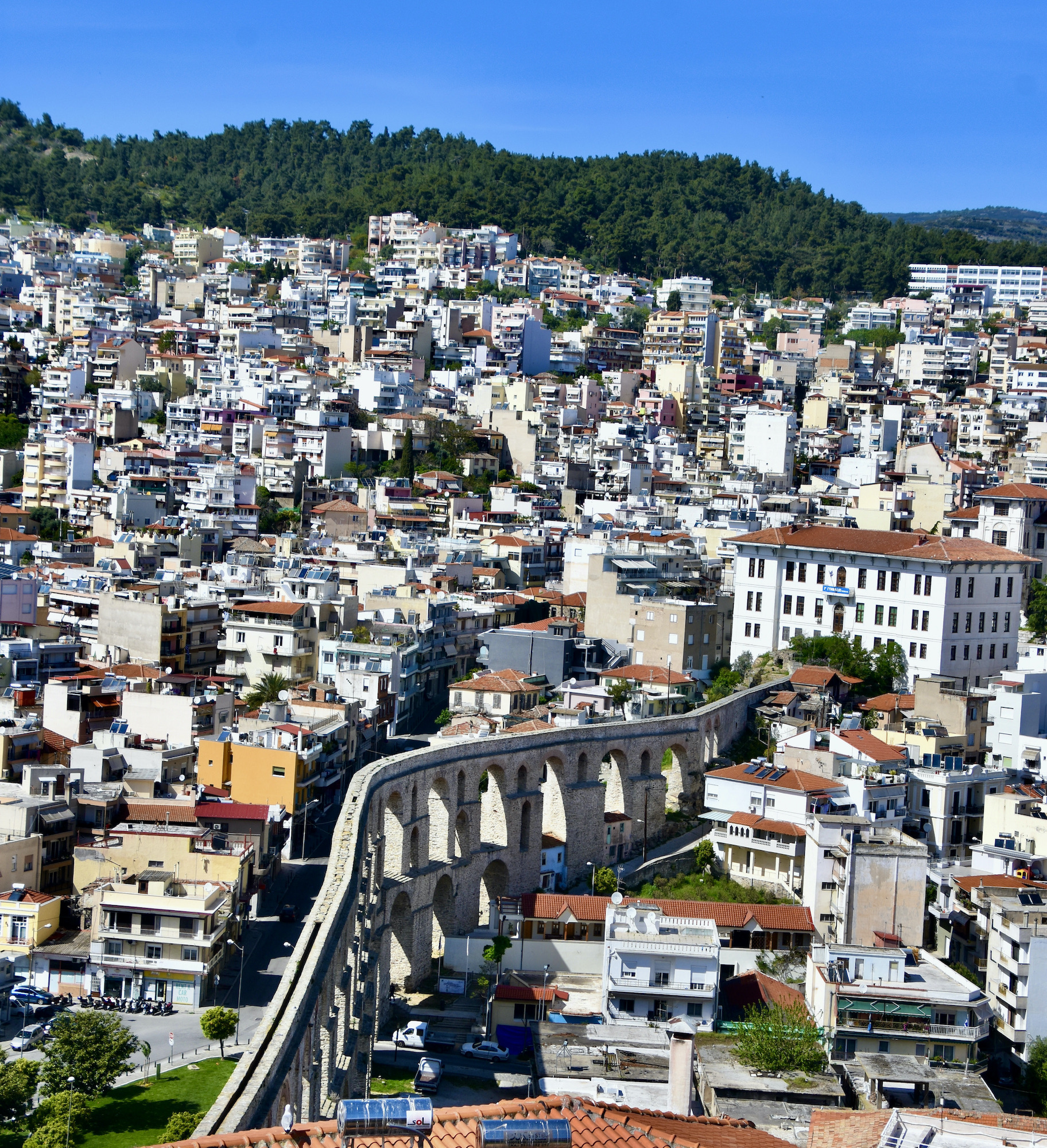
From the walls you also get a good look at the tower or keep and that’s my next stop.
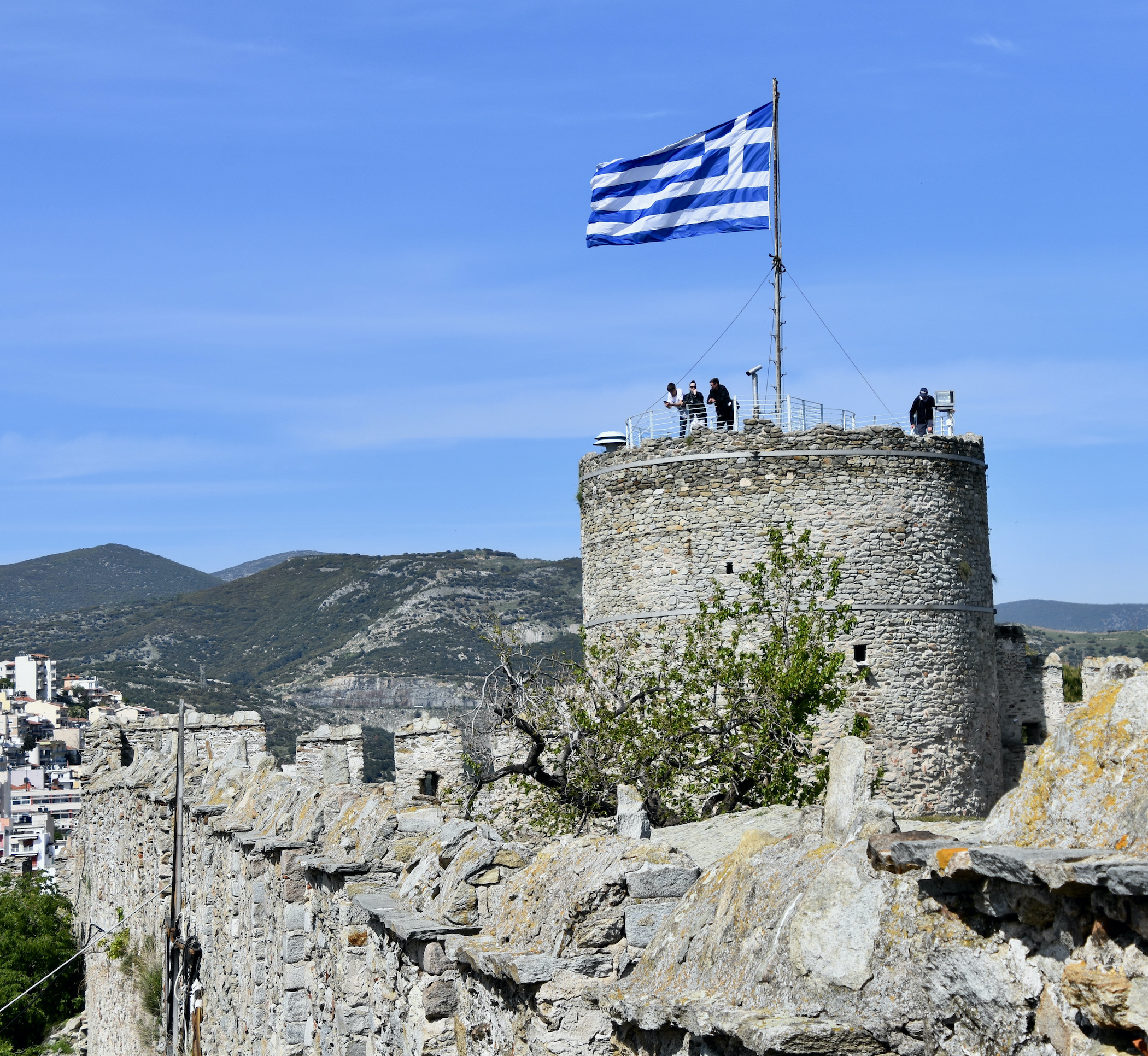
This is the view of Kavala from the top of the tower which is pretty amazing.
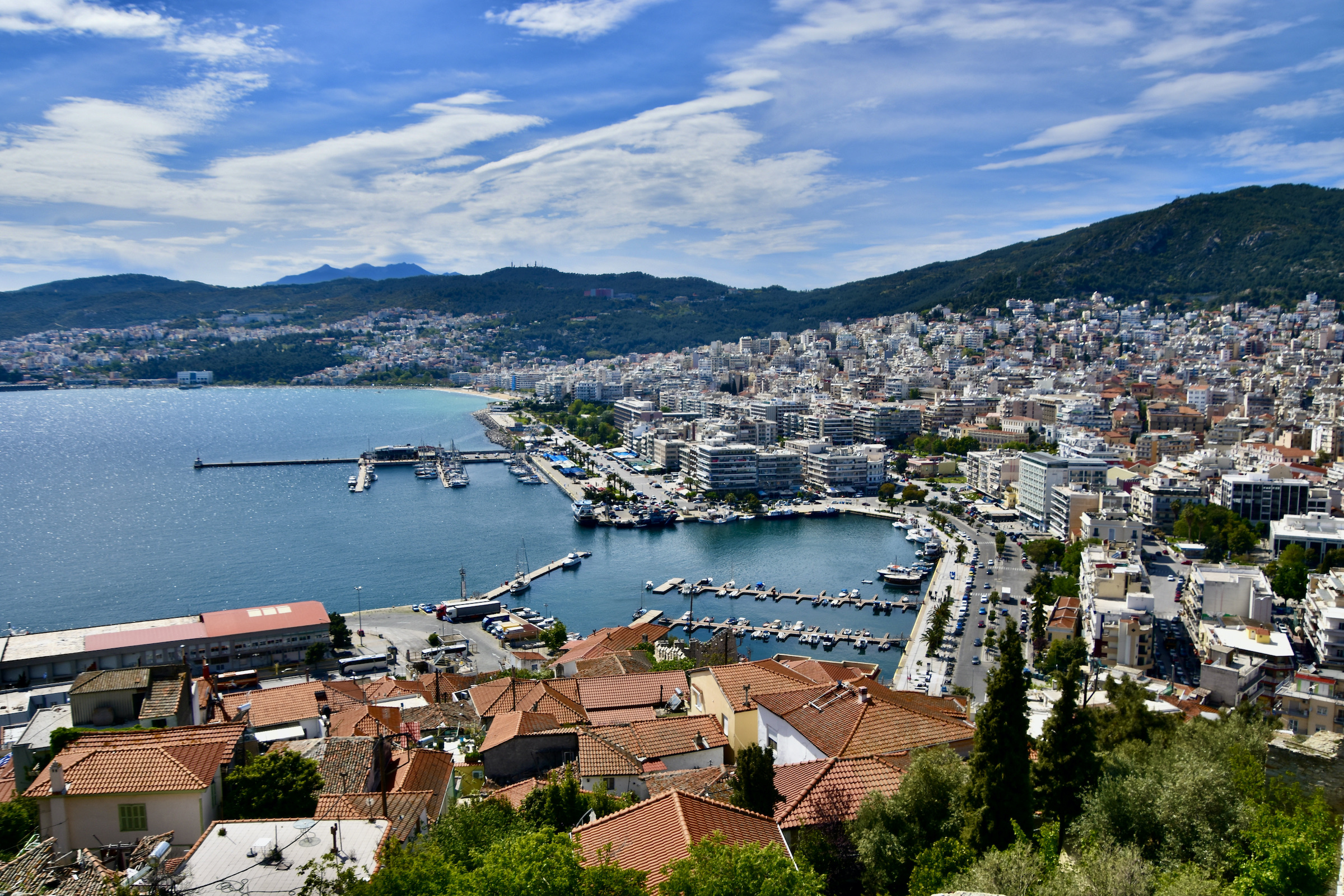
Making our way back down Alison and I try a different route from the one we came up on and the result is a number of dead ends and backtracking, but it’s a beautiful late afternoon and we’ve got nothing but time.
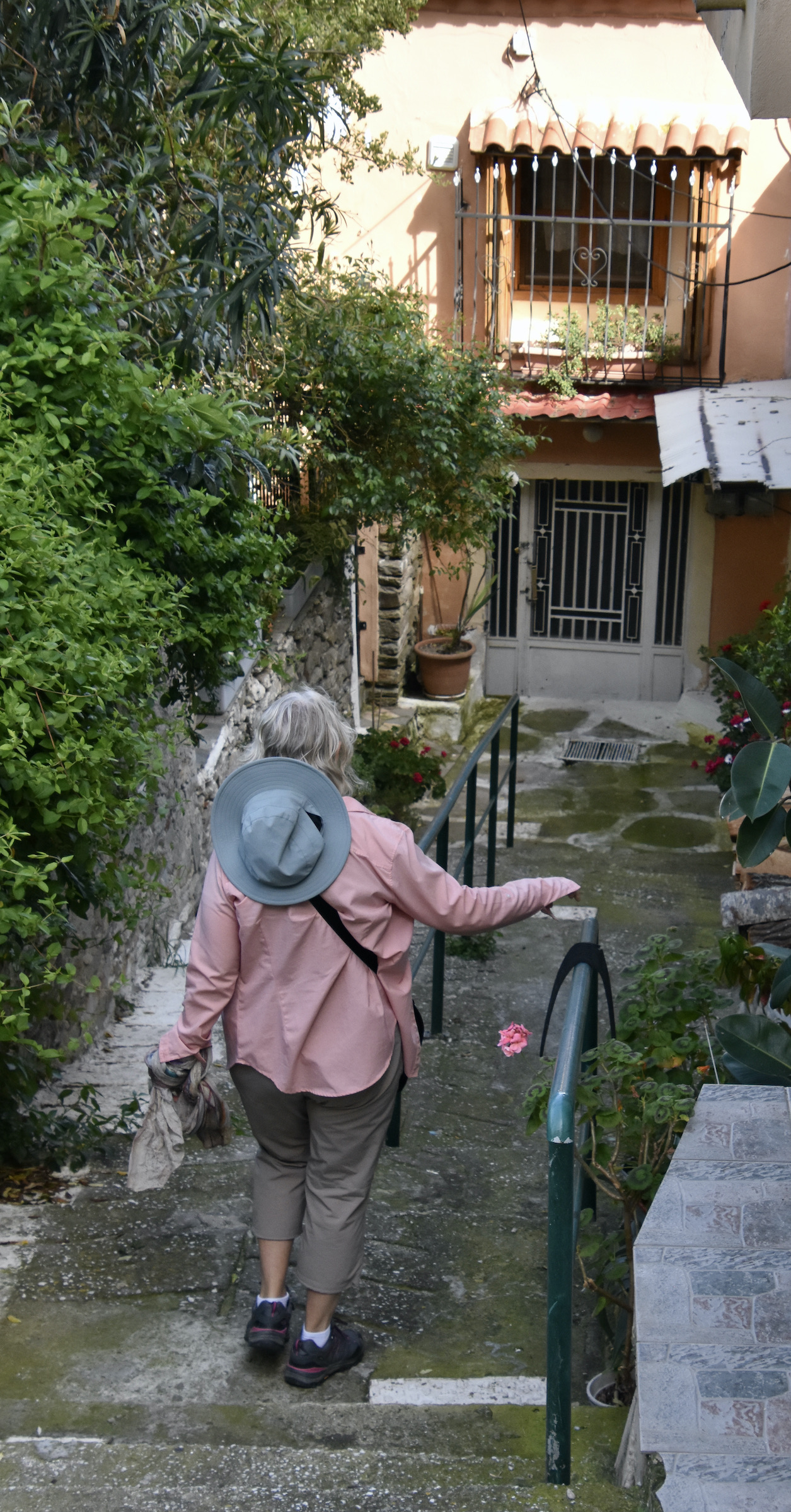
Eventually we get back to the waterfront where I notice this sign. Even though Constantinople has not had that name for five hundred years, the Greeks have a long memory and many still refuse to call it Istanbul. This is an interesting precursor to tomorrow’s itinerary which will see us explore the Mount Athos peninsula by boat and view the monasteries where Constantinople is still viewed as the seat of the Eastern Orthodox church.
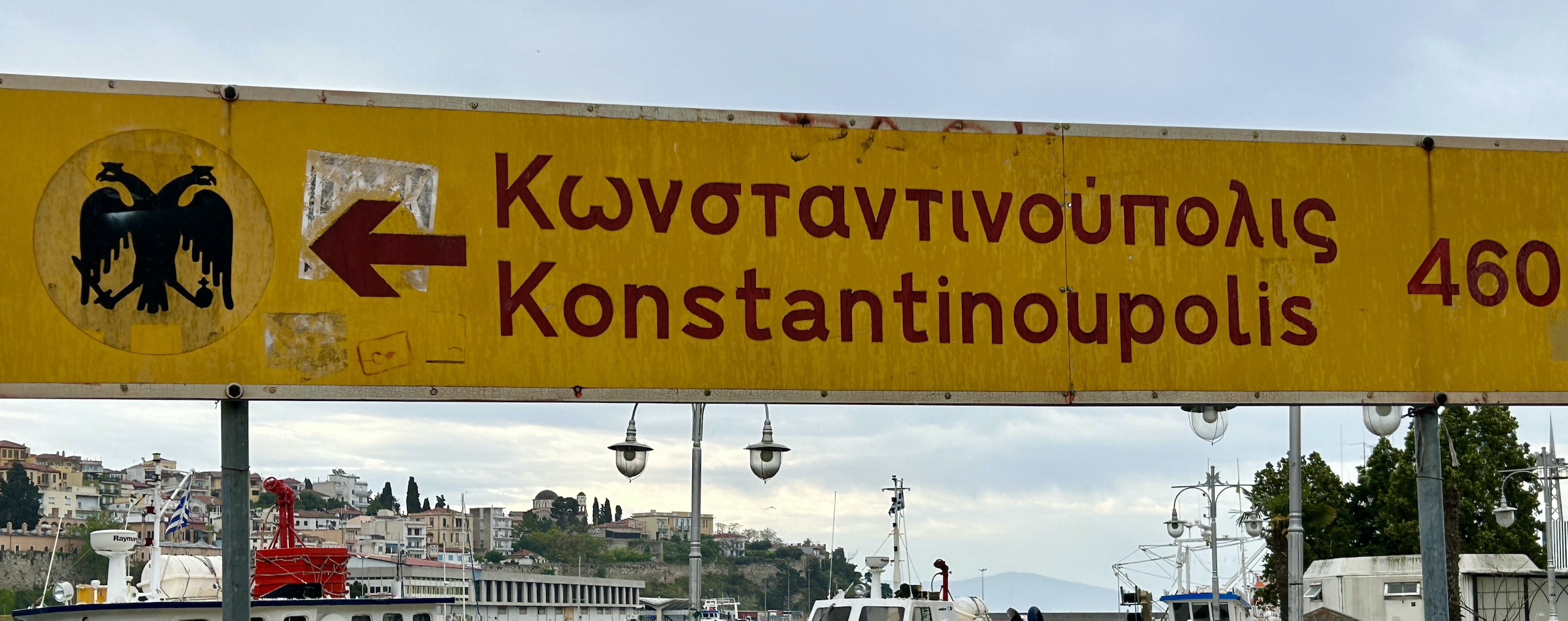
However, for now Alison and I are content to just reflect back on this great day that has seen us visit the wonderful site of Philippi and this historic city of Kavala. We are now going to join the group for a great seafood dinner on the waterfront. Hope to see you on the boat to Mount Athos tomorrow.

